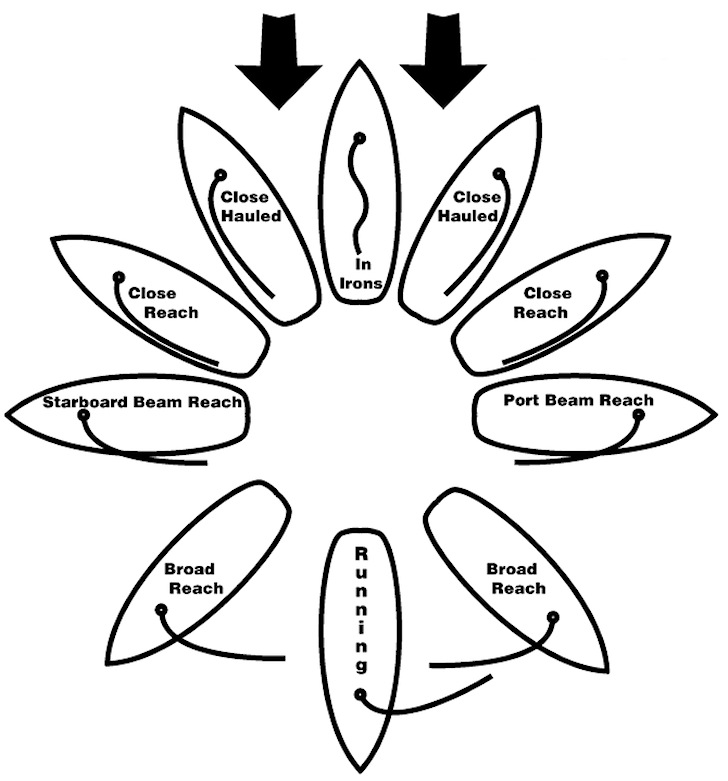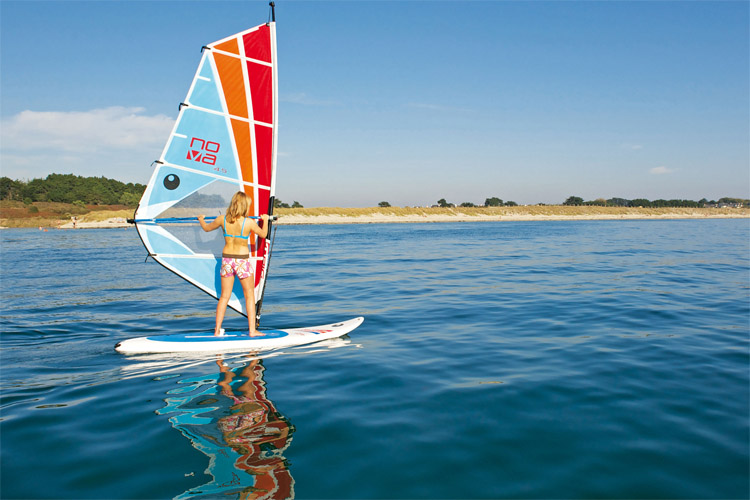Windsurfing is easy. The best way to learn how to sail properly is in a windsurfing school. If you're far away, try it by yourself, but never alone or in stormy waters.
Here are the tips to start windsurfing in a couple of hours.
First of all, prepare your gear: windsurf board, rig, mast, sail, and boom should be carefully assembled, rigged, tuned, and mounted.
Learn how to rig a windsurfer and get the right equipment by visiting the windsurf board size chart.
Beginners should start windsurfing with a 190-liter plus board. Find a flat water lake or calm sea. Start by finding your equilibrium on the windsurf board.
Keep it steady for 10 minutes. Now, it's time to set sail.
In order to progress through the flat waters, you must quickly learn the points of sail or, in other words, the board's course in relation to the wind direction.

Points of Sail
The main points of sail are as follows:
- Close Hauled: sailing as close to the wind as possible (an angle of around 45 degrees). You "zig zag" to make progress upwind. The turn between these "zig-zags" is called "tacking";
- Beam Reach: sailing across the wind. Point at where you want to sail fast. The sail works by providing huge amounts of lift, driving you faster;
- Broad Reach: almost like going downwind, except for the fact that the sail is still working as an aerofoil. In stronger winds, it is the fastest point of sail;
- Running: sailing with the wind from behind;
If you're "In Irons," you won't probably move forward. So try to push or pull the sail and get the first feel of windsurfing.
Now that you're sailing your first nautical miles, you'll need to learn to turn around on the water.
There are two ways of changing your course: tacking (the rig passes over the back of the board) and jibing (the rig passes over the front of the board).
Tacking is a basic 180º turn. It's vital to learn how to do it to get back to your original starting point.
To do this, sail the board into the wind, place the front hand on the mast, and start to lean the sail back towards the tail.
Step around the mast to the opposite side of the board.
The board will pass through the eye of the wind, and you will resume your sailing speed.
Try to turn 180 degrees several times to better your skills, and never get far away from safe land. Enjoy windsurfing.
At the intermediate level, you'll learn to jibe and sail with a harness.
Get "Start Windsurfing Right!".
